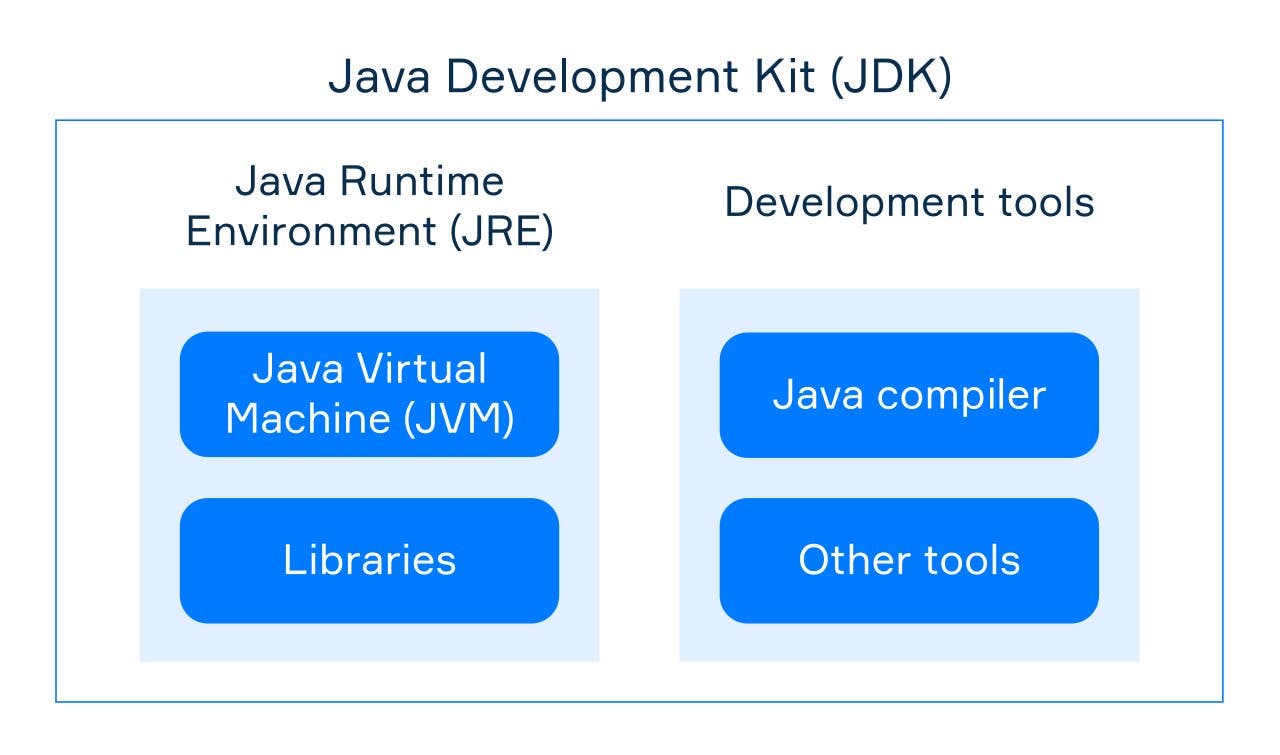Jvm / Jre / Jdk
Java Virtual Machine (JVM) / Java Runtime Environment (JRE) / Java Development Kit (JDK)
Java Virtual Machine (JVM)
Java Virtual Machine, or JVM, is a virtual simulation of a physical computer. It executes the Java (or Java compatible) bytecode, which comes after the source code compilation. In some sense, JVM acts as a mediator between the code and the real machine. It operates with a set of unified bytecode instructions that are interpreted and translated into machine instructions.
JVMs are available for many hardware and software platforms, so you can run the bytecode almost everywhere. A program compiled to the bytecode is almost always platform-independent. Basically, when you have a JVM language code, you need to compile it only once, get the bytecode, and you'll be able to run it on any platform that has JVM.
Today there is a variety of JVM implementations, Java HotSpot Virtual Machine being the primary reference.
Java Runtime Environment (JRE)
Java Runtime Environment, or JRE, is an execution environment. It includes the necessary components for running compiled JVM programs: JVM itself and Java Class Library (JCL).
JCL is essentially a set of standard libraries providing the most common functionality: fundamental classes, input/output, math package, collections, security, user interface toolkits, and many others. You can utilize these libraries in your programs.
When you run a compiled program, JRE combines the program bytecode with necessary libraries and runs JVM, which executes the resulting bytecode.
Java Development Kit (JDK)
Java Development Kit, or JDK, is a package to develop programs for the Java Platform. It includes JRE to run the programs and tools for developers: Java compiler, debugger, archiver, documentation generator, etc.
At the compilation stage, compilers translate source code into .class files that contain bytecode and can be executed by JVM. Note that if you're using JVM languages other than Java, you will need to download compilers separately, as they are not bundled with JDK.
In practice, programs often consist of multiple .class files packed together with an archiver tool into a single Java Archive (JAR file). JRE can run the program packed into a JAR directly without extracting the archived files. The resulting file is more convenient to store and share over the network since the data is compressed.
Relationship between JVM, JRE, and JDK

Summary
- Java Virtual Machine executes compiled bytecode.
- Java Runtime Environment includes JVM and standard libraries and runs compiled programs.
- Java Development Kit, which includes JRE and development tools, is used by developers to write programs.
